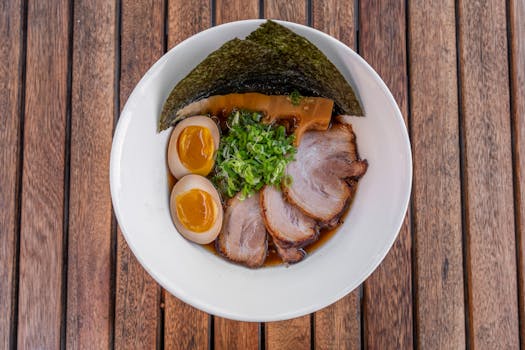Introduction to Miso: The Heart of Japanese Cuisine
Miso, a traditional Japanese seasoning, is a fermented paste made primarily from soybeans, salt, and a specific type of mold called koji. This umami-rich ingredient has been a staple in Japanese cooking for centuries, known for its ability to enhance flavors in a variety of dishes. From soups to sauces and marinades, miso is a versatile ingredient that not only adds depth but also contributes to the nutritional profile of meals. In this article, we will explore the different types of miso, its culinary applications, and the health benefits it offers.
The Types of Miso: A Flavor Spectrum
There are several types of miso, each with its unique flavor profile, color, and aroma. The primary categories include:
- White Miso (Shiro Miso): This miso is made with a higher proportion of rice koji and has a sweet, mild flavor. It is often used in dressings and light soups.
- Red Miso (Aka Miso): Fermented for a longer period, red miso has a stronger, saltier taste. It is commonly used in heartier dishes like stews and marinades.
- Mixed Miso (Awase Miso): A blend of white and red miso, this type offers a balanced flavor and is versatile for various recipes.
- Barley Miso (Mugi Miso): Made with barley koji, this miso has a rich, earthy flavor and is often used in traditional Japanese dishes.
Miso in Soups: The Classic Miso Soup
One of the most iconic uses of miso is in miso soup, a staple in Japanese households. This comforting dish typically consists of dashi (a Japanese soup stock), miso paste, and various ingredients such as tofu, seaweed, and green onions. The process of making miso soup is simple yet allows for endless variations:
- Base: Start with a dashi made from kombu (seaweed) and bonito flakes for a rich umami flavor.
- Miso Addition: Dissolve the miso paste in a small amount of dashi before adding it to the pot to prevent clumping.
- Ingredients: Customize with seasonal vegetables, proteins like tofu or fish, and garnishes like scallions or sesame seeds.
According to a study published in the Journal of Nutrition, consuming miso soup regularly can contribute to a balanced diet, providing essential nutrients and probiotics that support gut health.
Miso in Sauces and Marinades: Elevating Flavors
Miso is not limited to soups; it can also be a game-changer in sauces and marinades. Its umami flavor enhances the taste of various dishes, making it an excellent addition to:
- Salad Dressings: Combine miso with vinegar, oil, and sweeteners for a creamy, flavorful dressing.
- Marinades: Mix miso with ingredients like sake, mirin, and ginger to create a savory marinade for meats and vegetables.
- Glazes: Use miso as a glaze for grilled fish or roasted vegetables, adding a caramelized finish that enhances the dish’s overall flavor.
For instance, a miso-glazed eggplant dish, known as “Nasu Dengaku,” showcases how miso can transform simple ingredients into a gourmet experience. The eggplant is grilled and brushed with a sweet miso glaze, resulting in a dish that is both visually appealing and delicious.
The Health Benefits of Miso
Beyond its culinary uses, miso offers several health benefits that make it a valuable addition to any diet:
- Probiotics: Miso is a fermented food, rich in beneficial bacteria that promote gut health.
- Nutrient-Rich: It contains essential vitamins and minerals, including vitamin K, manganese, and copper.
- Antioxidants: Miso is packed with antioxidants that help combat oxidative stress in the body.
Research has shown that regular consumption of fermented foods like miso can lead to improved digestion and a stronger immune system.
Conclusion: Embracing Miso in Your Kitchen
Miso is more than just a seasoning; it is a transformative ingredient that can elevate the flavors of soups, sauces, and marinades in Japanese cuisine. With its various types and health benefits, incorporating miso into your cooking can enhance not only the taste but also the nutritional value of your meals. Whether you are making a comforting bowl of miso soup or experimenting with miso-based marinades, this umami-rich ingredient is sure to impress. Embrace the versatility of miso and discover how it can enrich your culinary repertoire.
